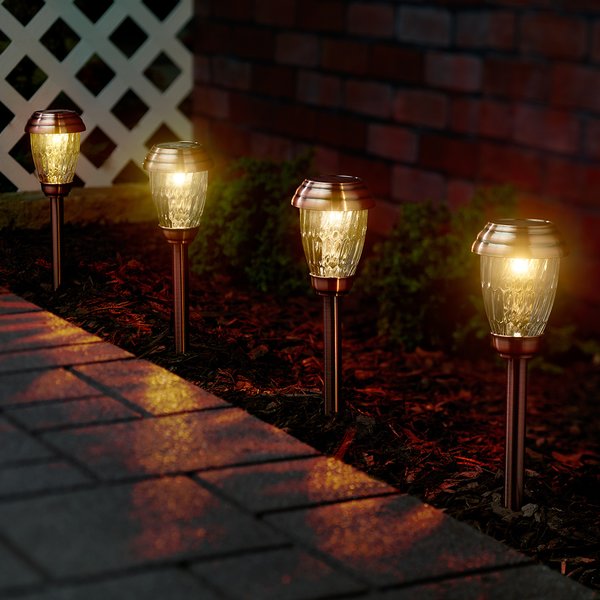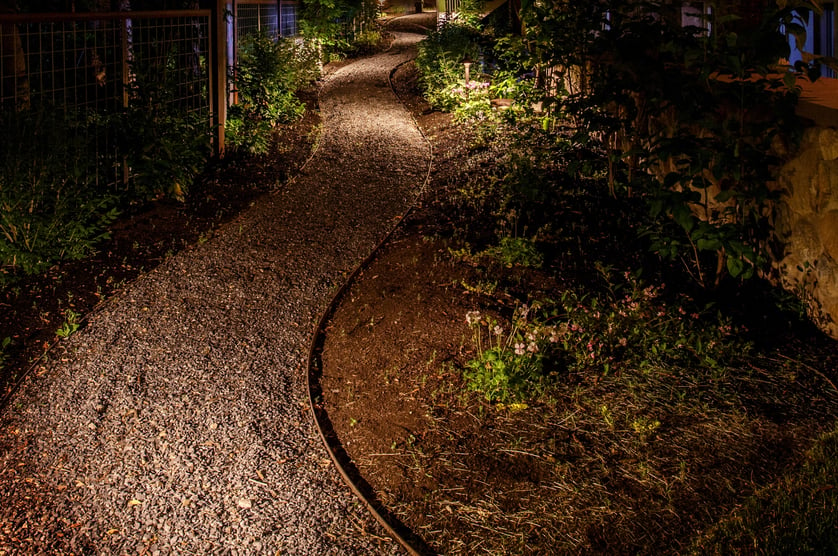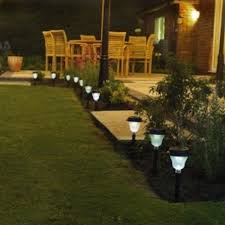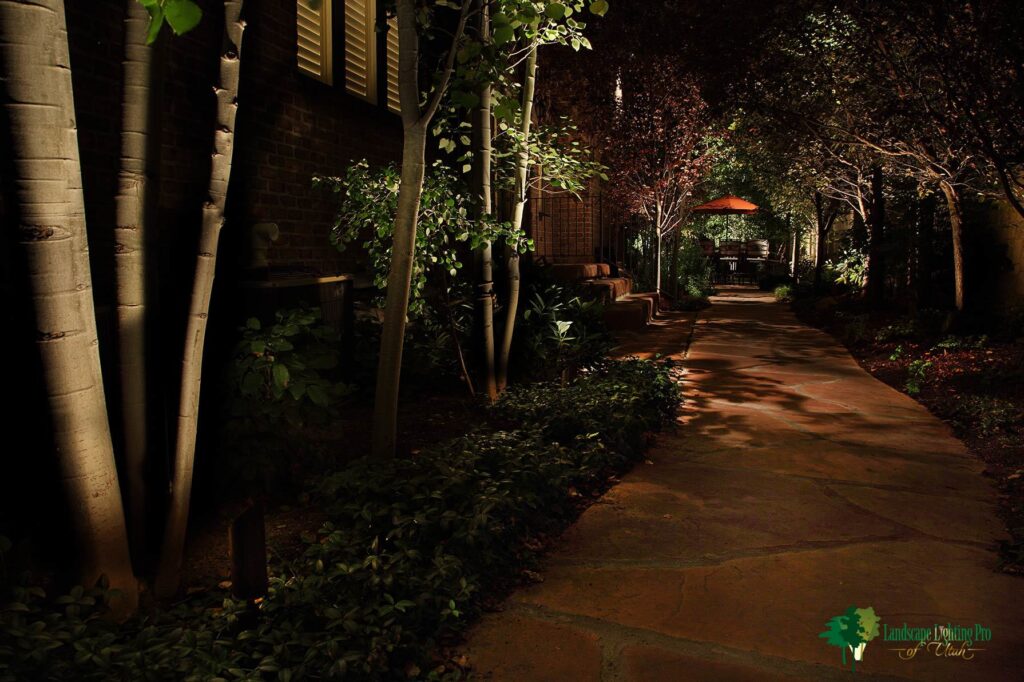Things to consider about solar landscape lighting
Recently, I typed “Solar Landscape Lighting” into my search engine to try to learn more about a landscape lighting approach that I’ve never had much interest in.
The search yielded a lot of pretty images of solar path lights displayed in picturesque garden beds and along beautifully paved pathways at night.
The various Big Box Store websites and numerous online retailers all present these fixtures in the best possible light.
I’ll admit, after visiting some of these sites and reading what they had to say about solar-powered lights, I could begin to see the appeal.
For the DIYer, solar lights are great and available at an affordable price point. If there is any confusion on how to place these lights in a yard, many of the sites offer step-by-step guides.
HOW THEY WORK
The principle for how they function is pretty simple.
There is a solar array on top of the fixture that captures sunlight and converts it into electric power stored in a rechargeable battery.
A mini photocell senses when the sun has set and turns on the small LED light inside the fixture. The LED runs off of the rechargeable battery. The whole idea behind solar lights is that you don’t have to do any wiring and you don’t worry about anything. Solar lights are self-sustaining and maintenance-free.
When a person purchases a solar-powered landscape lighting fixture, all that’s required after their initial purchase is that they place the fixture in the ground. After that, the lights should be good to go. Right?


THE TRUTH
Solar-powered landscape lights are self-sustaining and maintenance-free.
They work by using a solar array to capture sunlight and convert it into electric power, which is stored in a rechargeable battery.
A mini photocell senses when the sun has set and turns on the small LED light inside the fixture. The LED runs off of the rechargeable battery.
To install a solar-powered landscape light, all you need to do is place the fixture in the ground in a location that gets direct sunlight.
After that, the lights should be good to go. Right?
THE PROBLEMS
The biggest problem was that the fixtures break.
When I say break, I don’t mean stop working (although that is another problem) I mean snap in half.
The plastic stems and ground stakes are prone to breakage.
Be it from animals, snow removal, or being situated near a high-traffic area, these low-grade aluminum and composite plastic solar lights are cheaply constructed.
In a way it makes sense. Why are solar light fixtures so inexpensive when compared to something like low-voltage landscape lighting?
The lights simply aren’t made of materials built to last.
The other problem is that the lights will begin to dim over time (not that they really put out much light to begin with).
The batteries wear out, the solar arrays can become damaged, and the cheaply built day light sensors can become faulty and run the lights continually day and night.


THE SOLUTIONS
Many online retailers sell replacement components should they become damaged or stop working correctly.
If all the components are going to need replacing, why not just buy a new one altogether?
The fixtures fall apart and will regularly need to be replaced or repaired.
CONCLUSION
If you are looking for something that will initially be a quick, easy, and affordable solution for your outdoor lighting needs, then solar lights might be a good fit for you.
If you are looking for a lighting solution that will provide lasting enjoyment, then solar lights might not be the best route to take.
GIVE US A CALL:
To learn more about how to light your outdoor living space, call us at (801) 440-7647 to schedule a free consultation, or feel free to simply fill out a contact form on our website.
Salt Lake City (Midvale)
801-440-7647
St. George
435-932-6627
©2025 Landscape Lighting Pro
Privacy Policy
Cookie Policy